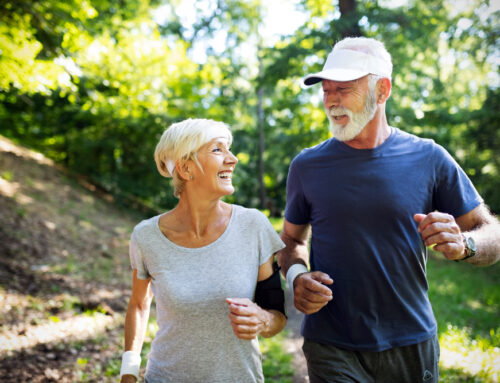Everyone knows the huge impact that exercise can contribute to improving one’s overall health. It actually becomes more essential as you start to climb the ladder of adulthood and reach your golden years while residing in the best assisted living in Palm Springs.
However, staying active is not always easy, especially if you are one of the 54 million seniors who endure chronic joint pain every day due to arthritis.
Arthritis is one of the most prevalent diseases that plague every adult in their 50s to 70s. This ailment is characterized by a damaged joint and/or cartilage, causing the affected part to swell, become stiff, and be extremely painful when moving. As a result, most seniors with arthritis have a decreased range of motion and limited mobility.
But according to many orthopedic experts, staying active CAN actually help affected individuals manage their arthritis and the symptoms that come with it. Additionally, maintaining a joint-friendly exercise routine is one of the best ways to relieve arthritic pain and improve one’s overall health.
So here are several helpful tips on how you can safely stay active despite your arthritis and some joint-friendly exercises to try!
1. Arthritis Management
Before making any changes in your routine or starting an exercise regimen, you should first make sure that your GP or a rheumatologist is managing your arthritis. In addition, it would be good to have a care plan already laid in place to make sure that your pain and other arthritic symptoms are under control.
Anti-inflammatory and other necessary medications will ensure that you will be able to handle most aerobic exercises without a problem. Additionally, your GP can recommend a series of safe workouts that can help with your condition while also cautioning you from intense exercises.
2. Modify Your Exercise Routine
Studies suggest that seniors with arthritis should only stay active as long as their health and condition allow it. This means that you don’t have to stick to the 30-minute per day recommended exercise for seniors. Instead, you can modify your activity level and time depending on the current condition of your body.
Other things that you can modify to suit your condition and ability include exercise moves and equipment. Furthermore, doctors also recommend you engage in low-impact cardiovascular exercises at first. Some examples of such activities include:
- Water aerobics and swimming
- Walking
- Tai-chi or yoga
- Pilates
- Weight training with light weights
- Stationary cycling
- Using elliptical machines
These activities are easy on the joints but still have tons of benefits for your overall physical well-being. However, you should avoid exercises that “pound” on the joints, like running and high-impact sports.
Additionally, arthritis symptoms may come and go during your workouts, so try to modify your routines when the pain hits so you won’t exacerbate your symptoms.

3. Pace Yourself
It is worth noting that these joint-friendly routines should still be started out slowly, especially if this is your first time to exercise again. Doing some warm-ups or stretching before going on your routine can save you from much pain later on and even from injuries.
Start low and go slow, then gradually ramp up your exercises depending on how your body responds to the activity. Know your limits, and don’t push yourself to the brink.
Another doctor-approved tip before working out is to apply a heat pack on your body part affected by arthritis. This will help lessen the pain and relax the muscles and joints.
4. Strengthen Your Weaknesses
Many assisted living in Palm Springs offer a diverse set of fitness regimens to suit the different health needs of their residents. However, most seniors usually go for the exercise they are good at, which is often not what their body needs.
When planning a workout, it’s vital to choose routines that would help strengthen your body and combat arthritis.
For example, if you have knee osteoarthritis, it would greatly benefit you to engage in exercises that strengthen your hamstrings, quadriceps, and glutes. These specific body muscles directly support your arthritic knee joints, so it would be good to help strengthen them to improve knee function.
Your doctor or a physical therapist can help you develop great exercises that focus on strengthening the important muscles needed to improve your arthritis. Plus, this can also help relieve most of your symptoms and enhance your prognosis.
5. Prioritize Safety
You should always prioritize your safety first in everything you do, especially now that you have a medical condition that can compromise your safety when doing physical activities. Some safety tips that you can keep in mind while exercising include:
- Listen to your body. Continue working out up to the point of mild tiredness only to avoid overexerting yourself. Respect your body by listening to it and NOT pushing through the pain you feel. Any intolerable discomfort means your body is telling you to stop.
- Recover well. Budget some time for your body to recover before, during, and after a workout. Learn the best warm-up and cool-down techniques, remedies for sore muscle areas, and medications needed for pain management.
- Recognize safe exercise places. Make sure to do your routines in safe places and areas, like a walking route with pathways or senior-friendly gyms with handlebars for safety.
- Invite an exercise buddy. Having someone to work out with can help ensure your safety, especially during the first few days of your new workout. In addition, it would be much more fun and motivating to exercise with someone, as opposed to doing it all on your own. There are also tons of mental and social benefits that come with staying active with a loved one, fellow resident, or your caregiver.
Lastly, don’t forget to eat a healthy and balanced diet in your assisted living in Palm Springs. Make sure to consume more fruits, veggies, and lean protein to get all the nutrients and energy you need for the day. Also, put in some whole grains (e.g., oatmeal, quinoa, brown rice) on your plate for a much-needed high-quality carb source.






